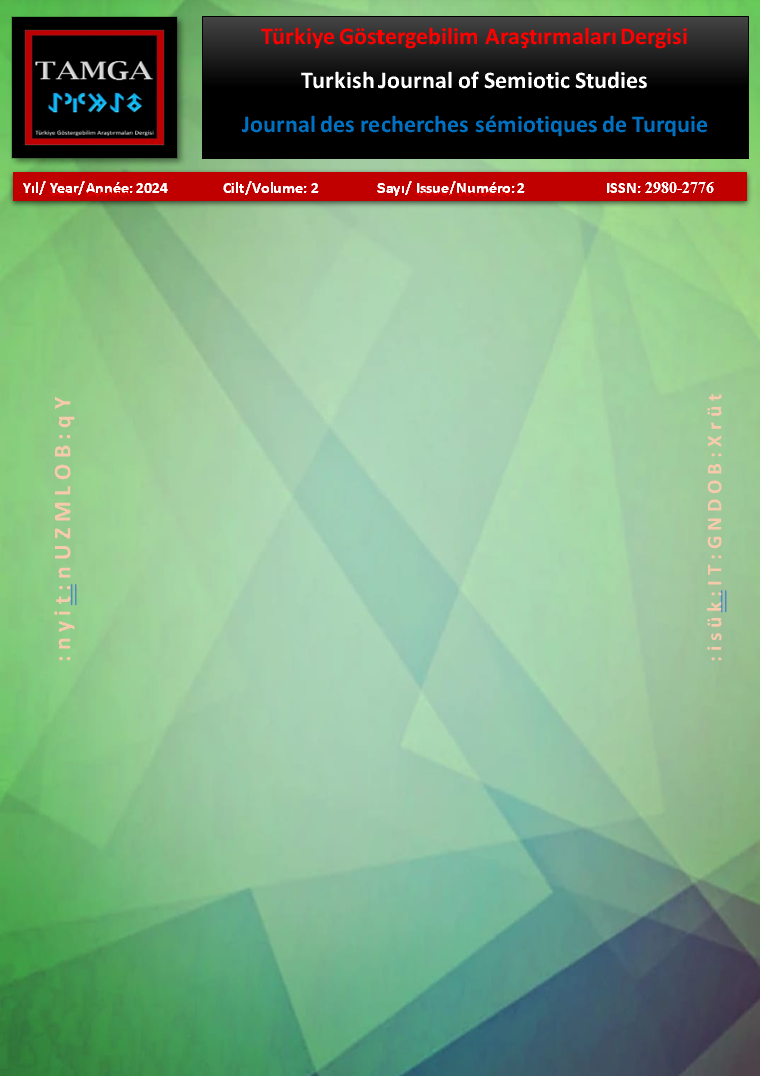A literary semiotic practice of O. Henry’s “The Skylight Room” in language teaching
DOI:
https://doi.org/10.5281/zenodo.14568376Keywords:
Semiotics, literary semiotics, O. Henry, The Skylight Room, language teachingAbstract
Whether it is a work of art or a text, a message to be conveyed is delivered to its addressee in various ways. Here, a communication is established. Communication is a transmission, and the message is conveyed to the addressee through verbal or non-verbal signs. Hence, not solely written texts but also paintings, sculptures, or instructive visuals can be regarded as texts in terms of establishing a communication. These types of texts have also emerged through the meaningful sequence of the signs that constitute them. Along with educational materials created through verbal and/or non-verbal signs, literary texts, which are accepted as artistic products, have also begun to take their place in teaching methodologies over time. These kinds of literary texts, commonly employed in classroom applications, provide a dynamic approach to language acquisition and the process of signification, thereby enhancing the learning experience. In the process of developing this learning experience, different theoretical methods and techniques are utilized. At this point, the theory of semiotics also offers the possibility of interdisciplinary study in classroom practices. Semiotics studies have also been carried out across different disciplines within literature, and in this study, it is interrelated with literature and educational sciences. Accordingly, the examination object of this study is a literary work which is in communication with its readers. Therefore, the primary objective of the study is to suggest a methodology for integrating literary semiotic theory, along with its methods and techniques, into classroom practices. The current study also aims to analyze O. Henry’s (William Sydney Porter) short story “The Skylight Room” in line with the principles of literary semiotics and to shed light on its importance and advantages in terms of language teaching.
References
Abushihab, I. M. (2012). A semiotic-based approach as an effective tool for teaching verbal and non-verbal aspects of language. Journal of language teaching & research, 3(6), 1150-1156.
Akata, Z. H. (2021). Halit Ziya Uşaklıgil’in “Ferhunde Kalfa” adlı öyküsünün göstergebilim açısından çözümlenmesi. In F. Uzdu Yıldız (Ed.), Modern Türk edebiyatı yazınsal göstergebilim çözümlemeleri. Günce Yayınları. (pp. 111-135).
Akata, Z. H. (2022). Karşı ötekileştirme: Bizleştirme. In Günay, V. D. & Kalelioğlu, M. (Eds.), Ötekiler imparatorluğu: Öteki’nin göstergebilimsel serüveni. Günce Yayınları. (pp. 96-115).
Altay, İ. F., & Karaazmak, F. (2018). The evaluation of instructors’ views on the use of semiotics in English classrooms. Journal of language and linguistic studies, 14(4), 63-73.
Altun, M. (2018). The Advantages of using literary texts in the language classroom. International journal of social sciences & educational studies, 5(1), 118-121. https://doi.org/10.23918/ijsses.v5i1p118
Aydın, B. (2023). Analysis of narrative texts in the French language teaching class. International journal of education, technology and science, 3(3), 602-620.
Başar, İ., & Küçükali, S. (2021). Using literature in EFL classes. The journal of academic social sciences, 167-173. http://dx.doi.org/10.29228/ASOS.52686
Bertrand, D. (2000). Précis de sémiotique littéraire. Nathan-Université.
Bronwen, M., & Ringham, F. (2006). Key terms in semiotics. Continuum.
Danesi, M. (2000). Semiotics in language education (Vol. 2). Walter de Gruyter.
Erton, İ. (2006). Semiotic nature of language teaching methods in foreign language teaching and learning. Journal of language and linguistic studies, 2(1), 73- 86.
Ghosn, I. K. (2002). Four good reasons to use literature in primary school ELT. ELT journal, 56(2), 172-179.
Greimas, A. J., & Courtés, J. (1982). Semiotics and language: An analytical dictionary (D. Patte, J. Lee, E. McMahon II, G. Phillips, M. Rengstorf, & L. Crist, Trans.). Indiana University Press.
Günay, V. D. (2002). Göstergebilim yazıları. Multilingual Yayınları.
Henry, O. (1995). 100 Selected stories. Wordsworth Editions.
İnce, Ö. (2002). Yazınsal söylem üzerine. Türkiye İş Bankası Kültür Yayınları.
Kalelioğlu, M. (2024). Yazınsal göstergebilim bir kuram bir uygulama anlam üretim süreçleri. Seçkin Yayıncılık.
Kalelioğlu, M. & Yurtseven, H. (2023). Theory and practice: Literary semiotics and text analysis. In K.
Büyükkarcı & A. Önal (Eds.), Current studies in foreign language education. ISRES Publishing. (pp. 1-33).
Kumral, N. (2022). A semiotic approach to the reading of literary texts in EFL classes. Gazi Üniversitesi Gazi Eğitim Fakültesi Dergisi, 42(1), 521-539.
Mart, C.T. (2017). Literary texts: A means to promote language proficiency of upper-intermediate level EFL students. Journal of education in black sea region, 2(2), 44-55.
McKay, S. (1982). Literature in the ESL classroom. TESOL quarterly, 16(4), 529-536.
Natsir, M. (2016). Teaching English in Semiotics. Jurnal Bahas unimed, 27(3), 78-312.
Rifat, M. (2011). Homo semioticus ve genel göstergebilim sorunları. YKY Yayınları.
Rifat, M. (2019). Göstergebilimin abc’si. Say Yayınları.
Rifat, M. (2020). XX. yüzyılda dilbilim ve göstergebilim kuramları (Genişletilmiş 8. Baskı, Cilt 1). Yapı Kredi Yayınları.
Sert, O. (2006). Semiotic approach and its contributions to English language learning and teaching. Hacettepe Üniversitesi Eğitim Fakültesi dergisi, 31(31), 106-114.
Soyer, S. (2016). Yabancı dil öğretiminde edebiyatın yeri ve dil becerilerinin gelişimine katkısı. EKEV akademi dergisi, 20(67), 303-314.
Turan, Y. Z., & Çolak, R. (2018). The use of short story as a learning/teaching tool in ELT/EFL classes: “The Necklace” by Guy de Maupassant. Karabük Üniversitesi Sosyal Bilimler Enstitüsü dergisi, 8(1), 173-189.
Downloads
Published
How to Cite
Issue
Section
License
Copyright (c) 2024 TAMGA-Turkish Journal of Semiotic Studies

This work is licensed under a Creative Commons Attribution 4.0 International License.



